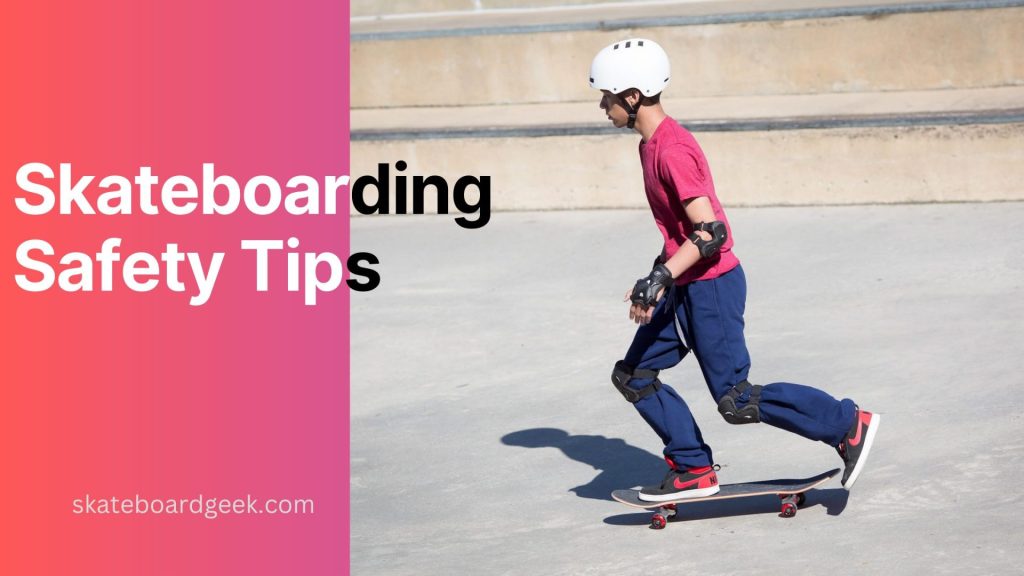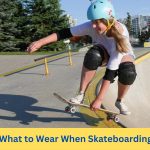There’s nothing quite like the thrill of skateboarding. The feel of pavement beneath your wheels, and the rush of adrenaline as you pick up speed while riding a skateboard. But as any experienced skateboarder will tell you, with great thrill comes great responsibility.
Skateboarding can be dangerous, especially if you are not prepared. So, before you hop on your board and head out into the world, take a moment to brush up on some essential skateboarding safety tips.
Here, I’ll cover everything from the proper gear to wear to a safe place to ride, along with tips to avoid those nasty spills and keep your ride smooth and injury-free
Afraid of riding a skateboard? Here’s a guide to get over fear of skateboarding.
Contents
Skateboarding Safety Tips Including Equipment and Gear
Before you even step on a board, it’s important to ensure that you have the right equipment, including a quality skateboard, shoes, and most importantly, protective gear.
Let’s discuss the essential safety equipment and gear that you need to wear every time you skate.
1. Check Your Equipment
First things first, checking your skateboard before you ride is critical for ensuring that it is in good condition and safe to use.
Before heading out, inspect your board for any signs of damage, such as cracks, chips, or loose parts. A cracked or broken board can cause you to lose control, leading to a dangerous fall.
Tighten your trucks and make sure your wheels are aligned properly. Loose trucks can cause the board to wobble and make it harder to control.
Also, make sure your trucks are tightened correctly, and your wheels are properly aligned. Otherwise, loose trucks can cause the board to wobble and make it harder to control.
And don’t ignore the grip tape, inspect for any wear and tear and loose area, this is essential for a strong grip on the deck.
If you are not sure how to do this, ask someone more experienced or head to your local skate shop for help.
Follow this step-by-step guide to clean a skateboard for proper maintenance.
2. Wear the Right Equipment to Protect Yourself
When it comes to skateboarding, protective gear isn’t optional – it’s a must. This includes:
- Helmet
- Knee pads
- Elbow pads
- Wrist guards
- Closed toe skate shoes
While it may seem uncool to wear all this gear, trust me, it’s even less cool to spend the rest of the summer in a cast. When you fall, these pieces of equipment can help prevent injuries like cuts, scrapes, bruises, and broken bones.
So, protect yourself and wear the gear. It’s a small price to pay for keeping yourself injury-free.
3. Helmets Are a Must
I can’t stress this enough – wear a helmet! It doesn’t matter if you are just cruising around or doing tricks, a helmet is essential for protecting your head from serious injuries.
It’s essential to wear a helmet while skateboarding because head injuries can be life-threatening. According to the American Academy of Pediatrics, helmets reduce the risk of head injuries by up to 85%.
Look for a helmet that meets safety standards, such as ASTM F1492 or CPSC. Make sure it fits properly and covers your forehead, and always wear it when you are on your board.
The chin strap should be tight enough to prevent the helmet from falling off but not so tight that it chokes you.
In another study published in the Journal of Trauma and Acute Care Surgery, helmet use significantly reduces the likelihood of head injuries, facial fractures, and skull fractures in skateboarders.
4. Find the Right Helmet Fit
Finding the right helmet fit is crucial for optimal protection. A helmet that is too small or too large won’t provide adequate protection.
To find the right fit, measure your head’s circumference, which should be above your eyebrows and ears. Different helmets have different sizing charts, so make sure to consult the manufacturer’s guidelines.
Always try on different helmets before buying the correct size so that it fits correctly, and it doesn’t wobble, slip, or move around on your head.
5. Check and Maintain the Gear
The pads and wrist guards are just as important as the helmet when it comes to protecting yourself from injuries.
Regularly inspect your pads and wrist guards for any signs of wear and tear, such as holes, tears, or loose straps. Replace them if they’re damaged, as they may not provide adequate protection. Make sure they fit snugly on your body without restricting your movement.
Finally, make sure your shoes have good traction and are in good condition. Avoid wearing shoes with worn-out soles, as this can cause you to slip off the board and fall.
6. Choose a Safe Environment for Skateboarding
When it comes to skateboarding safety, choosing the right environment is crucial. You should always skate in a safe and controlled environment, such as a skatepark, where the surfaces are designed for skating and there are no unexpected obstacles.
If you choose to skate on the streets or sidewalks, make sure you are aware of your surroundings and any potential hazards. It is also important to obey traffic laws and signals.
If you are finding it difficult to balance the board, here’s a detailed guide on how to push a skateboard.
How Dangerous Is Skateboarding Compared To Other Sports?
Skateboarding is often seen as a thrilling and exciting activity, but it can be dangerous compared to other sports, let’s take a look at the numbers.
According to the American Academy of Pediatrics, skateboarding is responsible for around 50,000 emergency room visits per year in the US alone. But before you swear off skateboarding, consider that many other sports have higher injury rates, such as football and basketball.
In fact, according to a study by the National Safety Council, skateboarding ranks 13th in sports-related injuries, with basketball taking the top spot.
That being said, skateboarding can still be dangerous if proper safety measures are not taken. Always wear protective gear, stick to designated skateboarding areas, and be aware of your surroundings.
Final Words
Well, I’ve shared a comprehensive guide to skateboarding safety tips. From choosing the right gear to finding safe places to ride, we’ve covered all the important bases.
Remember, skateboarding is a fun sport, but it can also be dangerous if proper precautions aren’t taken. But with the right equipment, knowledge, and a bit of common sense, you can minimize your risk of injury and enjoy shredding for years to come.
So, whether you are a seasoned pro or a newbie just starting out, always prioritize safety first – your body (and your mom) will thank you!
Frequently Asked Questions
What should you not do when skateboarding?
You should never ride your board in areas where it’s prohibited or unsafe (like busy roads or private property). You should also avoid trying tricks beyond your skill level, riding without proper protective gear, or under the influence of drugs or alcohol.
How do you skate safely on the street?
Skating on the street can be a lot of fun, but it’s crucial to be mindful of your surroundings. Always make sure to follow traffic rules and regulations, ride on the right side of the road, and avoid crowded areas. It’s also a good idea to practice your balance and turning skills before hitting the streets.
How do you skateboard without being scared?
Fear is a natural part of any sport, especially skateboarding. The best way to overcome it is to start slow, build up your skills gradually, and always practice in safe and controlled environments.
Remember to wear protective gear, focus on your breathing, and visualize yourself successfully completing your tricks. And most importantly, don’t be too hard on yourself – everyone falls at some point, even the pros!
- Best Electric Skateboard for Big Guys (Heavy Duty E-Boards) - June 3, 2023
- Skateboard Clothing Brands to Make You Stand Out In 2025 - May 31, 2023
- 90s Skateboarding Brands: The Rise and Fall of the Legends - May 28, 2023




![Zero Skateboards Review: A Brand You Can Trust [Pros & Cons] Zero skateboard reviews](https://skateboardgeek.com/wp-content/uploads/2023/01/zero-skateboard-brand-150x150.png)




